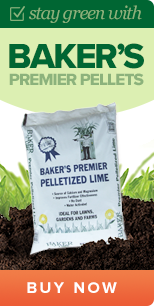Bring Your Lawn and Garden Into Balance: How to Measure pH Levels and Correct Soil pH
Table of Contents
Author/Reviewed By: Josh Miller, Sales Manager: Baker Lime & North America Minerals
Published: 5/26/2015 – Updated: 3/24/2020
Since the Neolithic Revolution, which occurred 10,000 years ago or so, human beings have been struggling to help plants grow. Sometimes, this has led to a bountiful harvest. Other times, there has been terrible drought. Even with 10,000 years of experience under our belt, humanity has had a difficult time in farming and gardening. This is largely because there are so many factors interacting at the same time.
Plants require water, sunlight and food – typically in the form of nitrogen. But they require these three elements in precisely balanced quantities, usually formulated by the plant’s evolutionary history in a given environment. Plants from tropical rainforests, for example, will require daily watering, while a cactus may not. We’re all basically familiar with those concepts of ample water and ample sunlight.
The story is different when we start talking about plant food. Many people – even professional farmers and gardeners – are unsure how much nitrogen any given plant should receive. And here’s where things can get even murkier: Adding too much nitrogen in the form of fertilizer can alter the pH levels of your soil, and that can have disastrous consequences for crops and gardens alike.
In a nutshell, the pH level of your soil is how acidic or non-acidic it is. In chemistry terms, high pH means high alkaline, also known as “basic” (the opposite of acid), while a low pH level means the substance is acidic. Citric acid, for example, has a pH level of roughly 2.2. This explains why you pucker when you drink lemon juice. But not everyone knows how to test pH levels in soil.
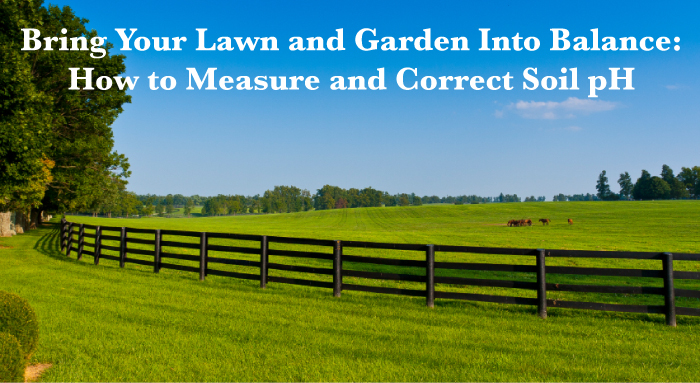
To be sure, over-fertilizing is not the only way to lower the pH levels of your soil. Much depends on local geology and agricultural activity, in addition to topography, history and other factors. In other words, there are so many variables that sometimes it can be difficult to pin down precisely what might be causing your acidic soil.
Luckily, that doesn’t mean you’re helpless to combat it, especially if you use lime for soil pH control. There are several ways you can decrease the acidity of your soil, find the best fertilizer for acidic soil, and restore balance to your garden or fields. This is good, because controlling soil pH is essential for the health of your plants.
Why Test Your Soil pH?
It might be helpful if we define a few terms. So, what is pH? Well, it stands for potenz Hydrogen. It’s German for “potential hydrogen” or “power of hydrogen.” Basically, it’s a measure of the negative Hydrogen ions in a particular substance, which dictates how acidic or alkaline something is.
The scale itself ranges from 0-14, with everything under seven being acidic and everything over seven registering as alkaline (or basic). It’s worth noting that the scale is logarithmic, which means that pH 2 is ten times more acidic than pH 3, which is ten times more acidic than pH 4 and so on.
Most gardens have a soil pH of somewhere between 5.5 and 10, although there is a wide degree of variability here. Now, it’s not as though soils with a very low pH are going to eat away at your plants and dissolve them right before your eyes. But if you have plants outside of their comfort zone, it can be problematic for another reason: It’s difficult for the plant to absorb nutrients, which tend to break down in lower pH scale zones. And while some plants are incredibly robust, there’s a limit to what every plant can take.
In order to ensure good growth, you need to know two things: the pH range under which your plants will comfortably thrive and the pH level of your soil. You can find out about your plants by doing a quick Google search or talking to a knowledgeable gardener or botanist. To test your soil pH, you’re going to have to do some digging, literally.
How to Measure pH Levels in Soil
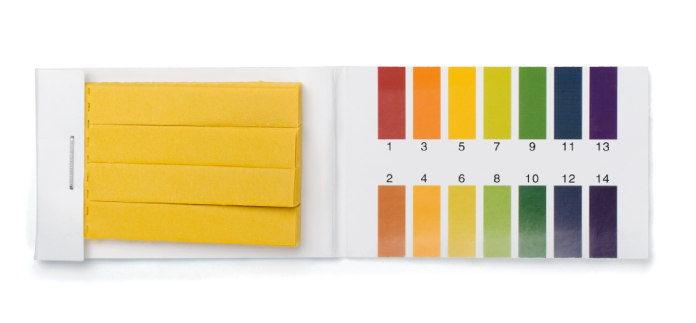
Testing your soil pH is actually a rather simple process, but there are more options than you might think, ranging from the professional to the DIY. Once you know how to measure pH levels in soil, you’re halfway there. Here are a couple of ways to find out how your soil is doing:
- Purchase a commercial pH testing probe. These devices range in price from $50 all the way to $250 and beyond. Obviously, you want to find one that best suits your budget. To use a pH probe, simply dig a shallow hole in your soil with a trowel, then fill the hole with distilled water. The water must be distilled to ensure accurate results. Hold the probe in the mud for 60 seconds, and you’ll receive your results on the device monitor.
- Purchase a disposable pH testing kit. These kits are generally much less expensive than the probe, typically costing $10 for ten tests. Essentially, these tests consist of strips of litmus paper. You use the same distilled water procedure as above. The litmus paper will give you a one-time-only result. The litmus strip will not produce valid results more than once. If you have a very small garden, and you don’t plan to watch your pH level very closely, this might be the way to go.
- Purchase a cabbage. You read that right. You can actually test your pH level with some cabbage. While this can be done, you will not get results that are as accurate as those from a litmus strip or from a pH probe. This method should be considered as a last resort or fun family project only. All you do is chop up some red cabbage – or use a food processor – and dump that cabbage into boiling, distilled water. This will create a 7pH solution. Pour that solution into a few clean cups. Then add a couple drops of soil to the cups. If the solution turns pink, it means your soil is acidic, but if it turns blue or green, it means the soil is alkaline.
Controlling soil pH starts with testing. But that is not where it ends.
Proper pH Levels for Different Plants
Plants, like people, come in all shapes and sizes. Some plants are robust, while some are fragile. There’s some pretty wide variety in terms of what types of plants can handle what pH ranges. To give you an idea of that variety, we’ve assembled the optimal pH levels of some common plants in the following chart:
| Plant | pH Level Minimum | pH Level Maximum |
| Broccoli | 6.0 | 7.0 |
| Cabbage | 6.0 | 7.5 |
| Carrots | 5.5 | 7.0 |
| Celery | 6.0 | 7.0 |
| Corn | 5.5 | 7.0 |
| Garlic | 5.5 | 7.5 |
| Mushroom | 6.5 | 7.5 |
| Onion | 6.0 | 7.0 |
| Peas | 6.0 | 7.5 |
| Peppers | 5.5 | 7.0 |
| Potatoes | 4.5 | 7.0 |
| Spinach | 6.0 | 7.5 |
| Tomato | 5.5 | 7.5 |
| Watermelon | 5.5 | 6.5 |
When it comes to the pH level of your soil and vegetables or plants you want to grow, you have two basic options. First, you can either select plants that naturally grow well in the soil you have – as it is. That’s where a little bit of research can help you out. Select plants that grow well in your soil’s pH range. However, sometimes your soil pH range can make it difficult to grow anything very well.
Sometimes, though, you just want to grow what you want to grow. If you have acidic soil and want to grow some carrots, you’re going to need to change the pH of your soil. In a chemistry lab, if you want to neutralize an acid, you need to introduce a base. Conversely, if you want to neutralize an alkaline, you can introduce an acid.
Luckily, the same is also true of your lawn and garden.
How Much Lime to Put on Your Lawn or Garden
How to Change the pH of Soil and Return Balance to Your Garden
So you’ve decided you want to restore balance to the pH of your soil. When you are deciding how much lime to apply you are going to need to know what your current pH level is and what the ideal level for the plants you are trying to grow is. From there you can use lime to restore the pH level of your gardens soil. There are a couple of ways to do this. Since most problems in a garden occur when the pH level is too low, you must introduce a base to lower the acidity. The most common and efficient way to do that is by adding limestone to your garden or lawn area.
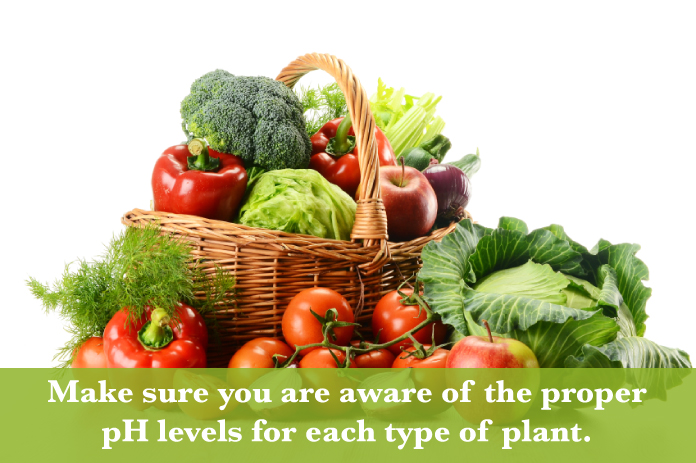
If your entire lawn is acidic, it means you’re going to have to spread limestone over a wide area. Luckily, you don’t have to quarry and chisel the stone yourself. You can find ready-to-disperse limestone at various garden specialty and hardware stores. Baker Lime offers a premier pelletized lime for acidic soil that is ideal for large-scale distribution.
In order to distribute lime throughout your yard, you must use a device called a spreader. This is what you might typically use to distribute fertilizer over your lawn. They come in handheld and wheeled varieties. Handheld devices work well for a small amount of space only. If you’re going to cover the entire yard, you definitely want a pushcart.
On the other hand, if you’re only concerned about your garden, the handheld device might be an appropriate distribution method. That said, you definitely want to make sure you cover the area as evenly as possible, because while the lime will work its way down into your soil, it won’t work its way across your soil. Of course, whether you’re treating your garden or lawn, you’re going to want to be careful about how much lime you’re adding.
Generally, using lime for soil pH control works because the lime chemically interacts with water. Wet soil will trigger the lime more quickly than dry soil. Additionally, you may want to till some of your soil if possible in order to ensure even coverage of the lime and its effects.
Find and contact your local Baker Lime dealer for more information on our lime!
Different Kinds of Lime for Your Garden
Adjusting soil pH with lime can be a tricky task. To determine how much lime to add to your garden or lawn, you first need to understand what type of limestone you’re adding. And there are more options than you might think:
- Dolomitic limestone: This limestone is particularly calibrated for soils that are magnesium-deficient. As magnesium plays an important role in the photosynthesis process – which is how your plants get food and energy and look nice and green – it’s definitely something you want in ample supply. While pH levels may depend on factors such as rainfall and planting, magnesium is generally a geographical phenomenon. Dolomitic limestone helps replenish some of that magnesium.
- Calcitic limestone: This limestone lacks extra magnesium. In other words, it’s good for soils that already have a healthy amount of this particular molecule. Generally, if you live in Oklahoma or Texas, your soil is probably already magnesium rich. Check with your local garden expert if you aren’t sure.
- Limestone dust (also known as pulverized limestone): Now generally displaced by limestone pellets, limestone dust is one way to administer limestone to your yard or garden. The problem is that limestone dust is easily picked up by the wind, meaning that much of it may not get down into the soil.
- Limestone pellets: While they may be slightly more expensive than limestone dust, pellets are more effective and more efficient. The pellets not only lose less lime to the elements, but they also spread more evenly. For the money, they’re the best way to get lime into your lawn or garden area.
Advantages of the Proper pH
Adjusting soil pH with lime can be an undertaking. From the small garden to the large yard, there’s a certain amount of research and hard work that will go into bringing your pH into alignment. First and foremost is the financial benefit. If your soil is too acidic, you are wasting fertilizer, which itself is quite an expense. How much fertilizer are you wasting?
| pH | Percentage of fertilizer wasted |
| 4.5 | 71% |
| 5.0 | 54% |
| 5.5 | 33% |
| 6.0 | 20% |
| 7.0 | 0% |
Obviously, a neutral pH of 7.0 is ideal for the nitrogen process to work at its best. This is the level you need for your plants to get as much food as they need and as easily as they can.
Generally, it will take 40 bags of lime per acre to keep your lawn pH neutral. To raise the pH level, it might take twice as much lime. But it’s worth it. In addition to fertilizer efficiency, when your lawn or garden has a neutral pH:
- It’s easier for plants to get nutrients.
- Plants process nutrients more efficiently.
- You’ll get greener, stronger plants.
- Plants will grow faster.
- Plants will be able to process sunlight more efficiently.
In other words, your garden or lawn will be greener and happier.
Keeping Your Plants Happy With Garden Soil Testing
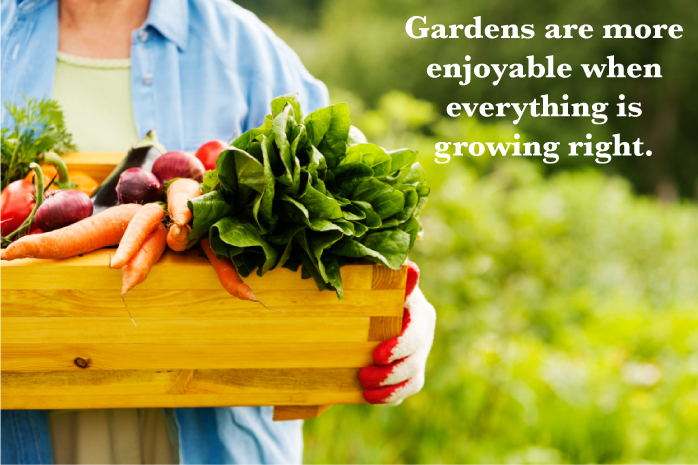
A garden is supposed to be a center of Zen: an area of relaxation and contemplation. But it can also be a lot of work. In order to keep your spirits balanced, your garden must also be balanced. Let’s put it this way: A garden is not relaxing when nothing is growing right. So to avoid the downright frustration of brown, dying plants, you need to make sure your green thumb is working on a balanced playing field. This means you must know how to test pH levels in soil.
In other words, you need to give your plants water, but not too much water. They need to get light, but not too much light. And, they need food, but not too much food.
It also means the soil must be rich and balanced. Acidic soil can keep your plants from getting the nutrients they need. And the surest, best way to keep your soil pH balanced is to purchase Baker Lime and get to work spreading it around your soil.
It will keep your pH balanced, your soil fruitful and your soul relaxed. For the sake of your plants, pick some up today.





